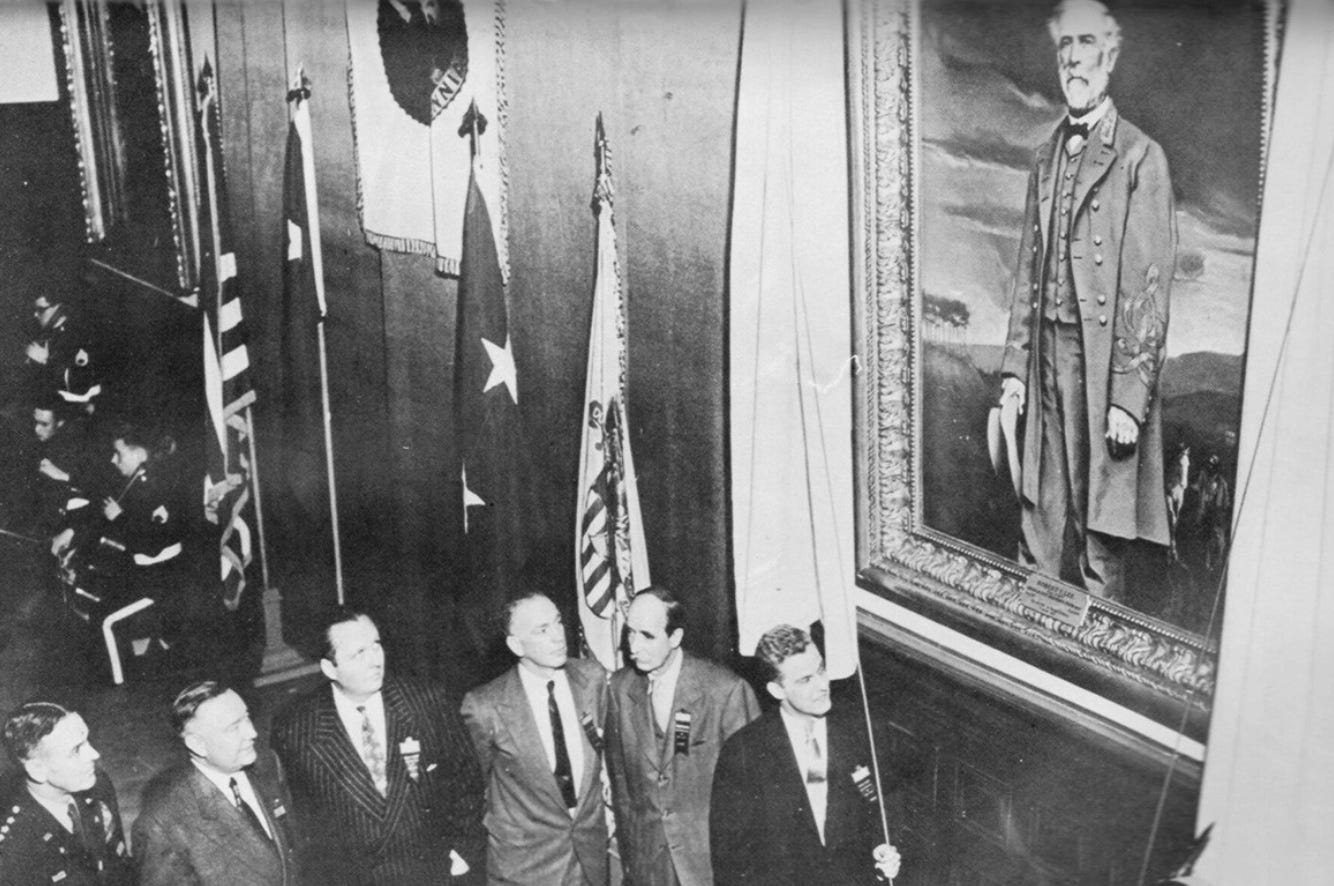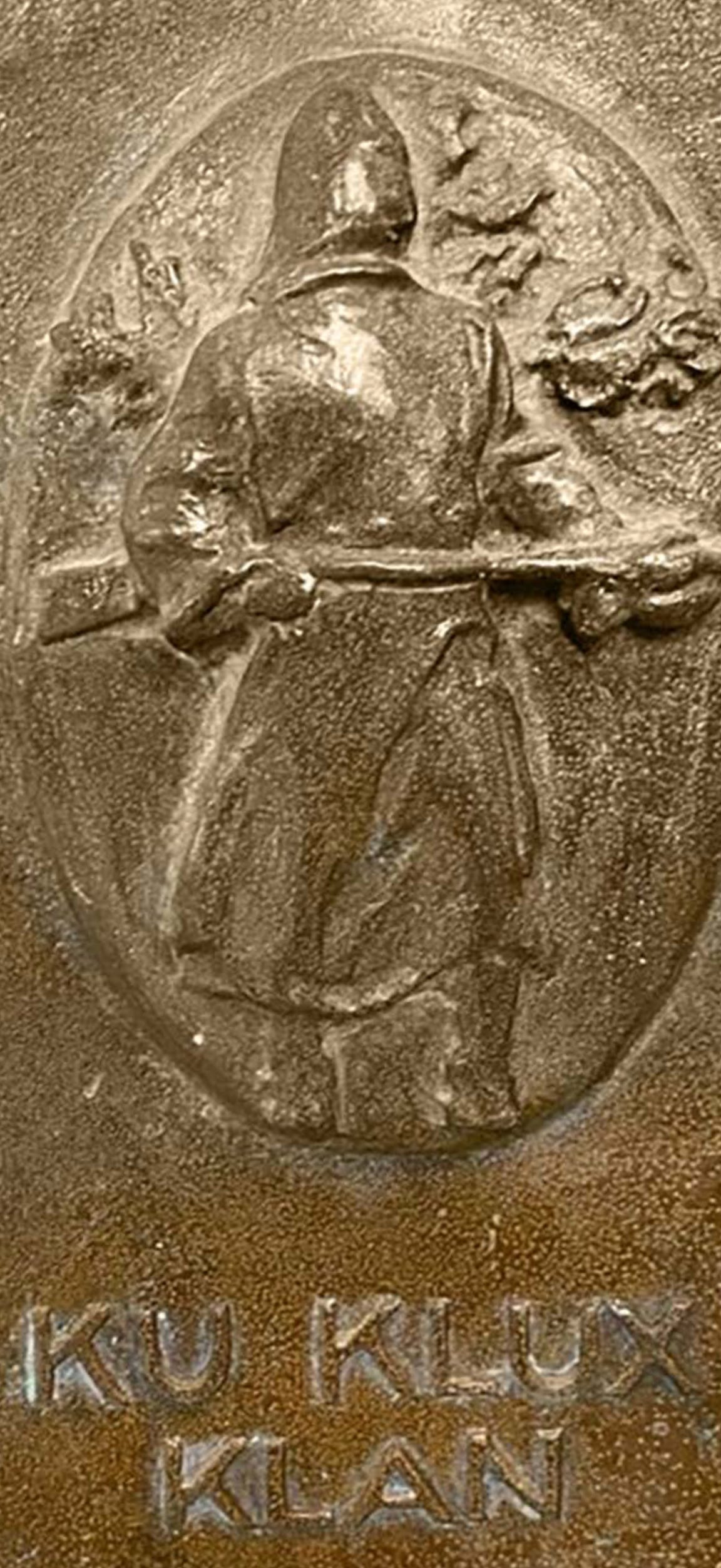Naming Commission Releases Second Report
It was not until the 1930s that West Point began honoring graduates who had fought against the United States in the Confederate army. Every previous attempt had been met with resistance and a reminder that men like Robert E. Lee and Stonewall Jackson had chosen to resign their commissions in the United States army to fight for a slaveholding nation. For the generation that defeated the Confederacy, Lee and others had committed treason.
This time frame is important to acknowledge regardless of your position on this issue. It’s a reminder that the conditions that opened West Point to commemorating Confederate military leaders did not stem from the war itself. The Civil War generation had largely died off by the 1930s. What is under review are the decisions made by subsequent generations of Americans.
The question is one of memory and not history.
Today West Point honors Confederates through the naming of barracks and roads, the large paintings/portraits located in various buildings, and on monuments/memorials located around the grounds.
Yesterday the Naming Commission released its second report recommending that both West Point and Naval Academy remove, rename or revise these assets. Most of the report focuses on West Point. [The first report recommended the changing of names of military bases that honor Confederate leaders.]
According to the commission, this is not about scrubbing or erasing history, but preserving an institution with a clear mission:
The commissioners do not make these recommendations with any intention of 'erasing history.' The facts of the past remain and the commissioners are confident the history of the Civil War will continue to be taught at all service academies with all the quality and complex detail our national past deserves. Rather, they make these recommendations to affirm West Point's long tradition of educating future generations of America's military leaders to represent the best of our national ideals.
Museums and other facilities that focus on the history of the Confederacy and West Point graduates who served in the Confederate army are not effected.
One of the most disturbing images found is a triptych, or multi-paneled art piece, at the entrance of West Point's Bartlett Hall that says "Ku Klux Klan" and appears to show a hooded figure with a rifle. It does not fall under their purview, but the commission recommended that it be removed as well.
The language used to characterize Lee and Confederates is straight and to the point.
Robert E. Lee
No doubts exist that Robert E. Lee fought for the Confederacy: he was its most effective and storied leader, and by the end of the Civil War, Lee had risen to General in Chief of the Armies of the Confederate States. Before the Civil War, he served in the U.S. Army for over 30 years. At the start of the Civil War, Lee turned down the post
of top field commander of the U.S. Army and chose to fight for the Confederacy.7 The consequences of his decisions were wide-ranging and destructive. Lee’s armies were responsible for the deaths of more United States Soldiers than practically any other enemy in our nation’s history.
P.G.T. Beauregard
During the Civil War, Beauregard served as a Confederate volunteer and was known as one of the Confederacy’s foremost military leaders. After the war, he considered fleeing overseas but ultimately stayed, due to the leniency offered to former Confederates.
William Hardee
Hardee joined the Confederate Army in 1861 and was an effective commander against the U.S. in many battles of the war’s Western Theater. He and his armies inflicted significant violence and casualties upon the U.S. Army.
A few weeks ago I mentioned that the commission was going to recommend the removal of the Confederate memorial in Arlington National Cemetery. This report makes no mention of it. Given that this is the final report it is unclear if or when it will be announced.
It was only a matter of time before the wider public debate about how the Confederacy is commemorated in public spaces made its way to West Point, but we also need to recognize that this discussion taking place within the US military itself has a history that stretches back to the post-Civil War period.
The report is well worth reading in its entirety.
It’s another reminder that there is nothing inevitable about Civil War memory.




The commission is approaching the matter in a convincing way. It rests on the simple argument that those engaged in violence against the United States do not deserve recognition as heroic figures. This includes every man who wore Confederate gray, including my own ancestors. We can study them as historical actors in the context of their lived experiences and even appreciate their remarkable skill as soldiers. However, we can never bestow on them the same honors owed to those who faithfully served this country.
Lee was a distinguished member of the Army in so many ways but when he crossed the rubicon in 1861 he forfeited all goodwill.